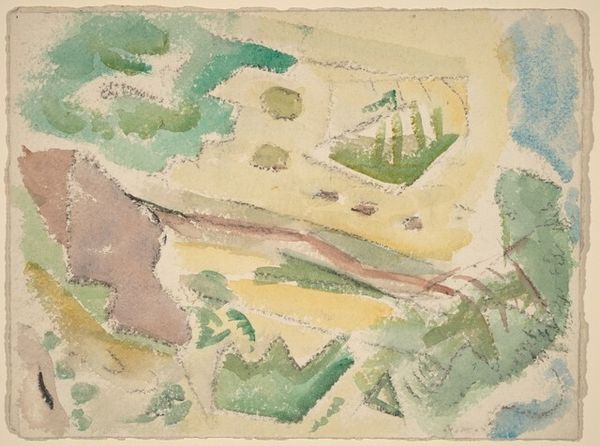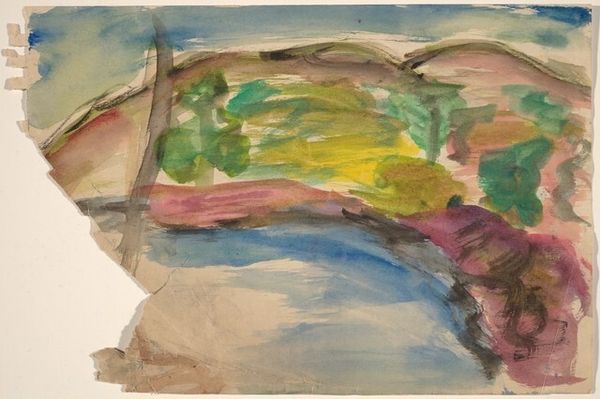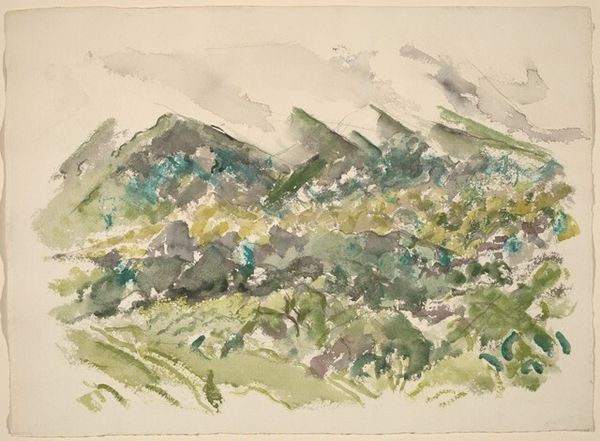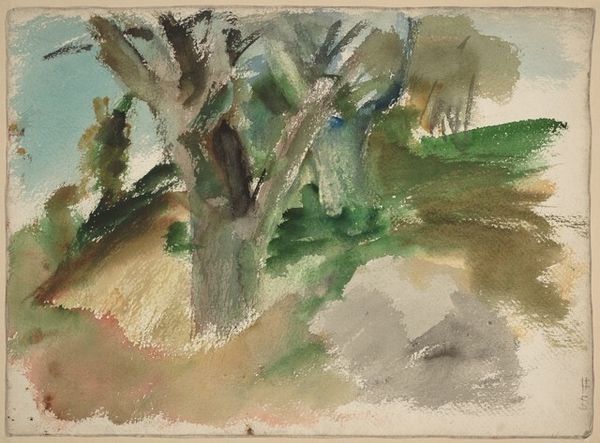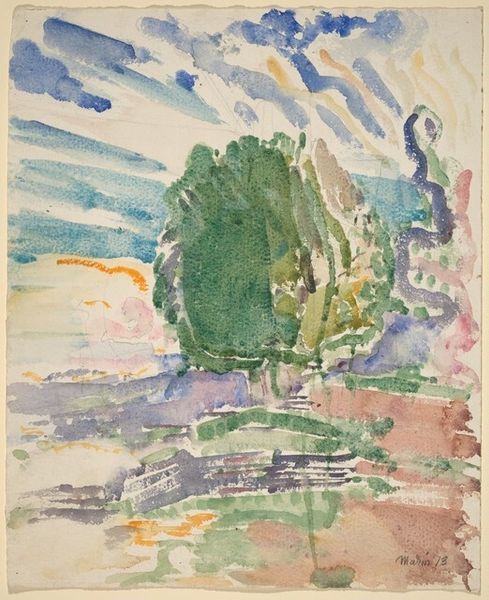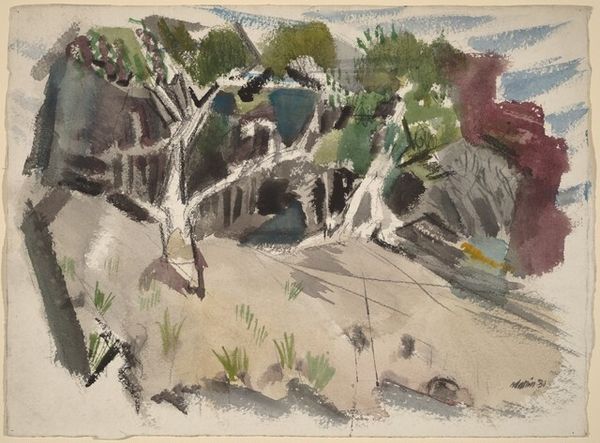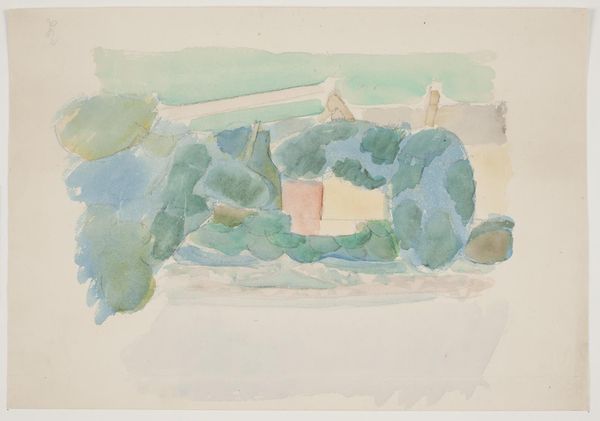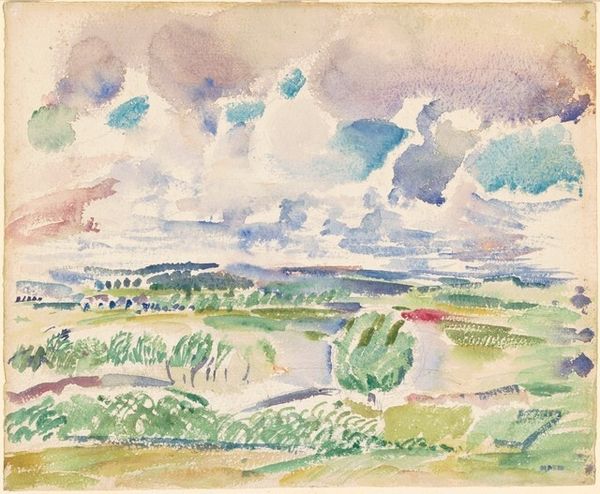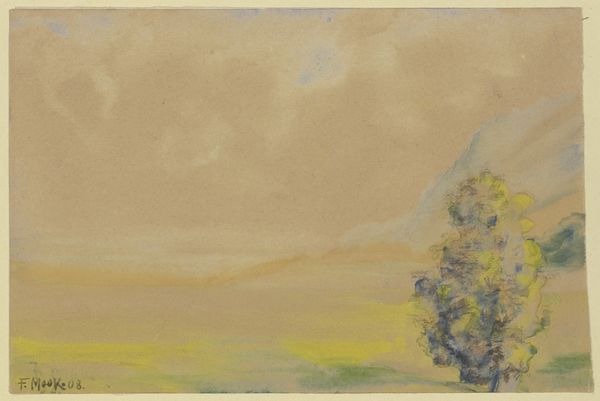![Landscape [verso] by Mark Rothko](/_next/image?url=https%3A%2F%2Fd2w8kbdekdi1gv.cloudfront.net%2FeyJidWNrZXQiOiAiYXJ0ZXJhLWltYWdlcy1idWNrZXQiLCAia2V5IjogImFydHdvcmtzLzg0YTEzNDFjLTM1MDYtNDdkMS1iM2U4LTQyNzdjYTExNTI0OC84NGExMzQxYy0zNTA2LTQ3ZDEtYjNlOC00Mjc3Y2ExMTUyNDhfZnVsbC5qcGciLCAiZWRpdHMiOiB7InJlc2l6ZSI6IHsid2lkdGgiOiAxOTIwLCAiaGVpZ2h0IjogMTkyMCwgImZpdCI6ICJpbnNpZGUifX19&w=1920&q=75)
drawing, watercolor
#
drawing
#
abstract painting
#
water colours
#
impressionism
#
landscape
#
figuration
#
watercolor
#
abstraction
#
watercolor
Copyright: National Gallery of Art: CC0 1.0
Editor: Here we have Rothko's watercolor, "Landscape [verso]." The washes of color are so soft, almost dreamlike. What do you see in this piece, beyond a preliminary study? Curator: For me, the real interest lies in the 'how' rather than the 'what' here. It’s the materiality of the watercolor itself, the way Rothko uses water as a medium, almost dissolving the landscape. Look at the pigments. Are these commercially produced colors, or are they created with a more localized process? Editor: I'm not sure about the pigments. I hadn't really considered the "where" they came from before. But, does the process and the medium really speak more loudly than the subject matter, or rather what it portends to express, of the artist’s intentions? Curator: Absolutely. In early works like this, Rothko isn't as concerned with traditional landscape painting. He is questioning its means, investigating the limits of the medium itself, challenging our conceptions of ‘art’ versus simple material production. Think about it: watercolours were typically used for leisure activities or commercial illustration. What does it mean when a so-called ‘high’ artist takes on that medium? Editor: So, by using watercolors, he’s commenting on the commodification or the everydayness of art itself? It’s like he’s collapsing the distance between the artistic process and the manufactured world? Curator: Precisely. We should analyze art production by studying all facets of material origin. This piece becomes less about 'landscape' and more about a statement about production, labour, and even the social accessibility of art-making. Editor: That's fascinating; it changes how I see his later, more abstract works too. Considering material really brings out another layer of meaning here. Curator: It encourages a more holistic understanding, right? To view art not as a singular creation, but a convergence of labor, materiality, and socio-economic implications.
Comments
No comments
Be the first to comment and join the conversation on the ultimate creative platform.
